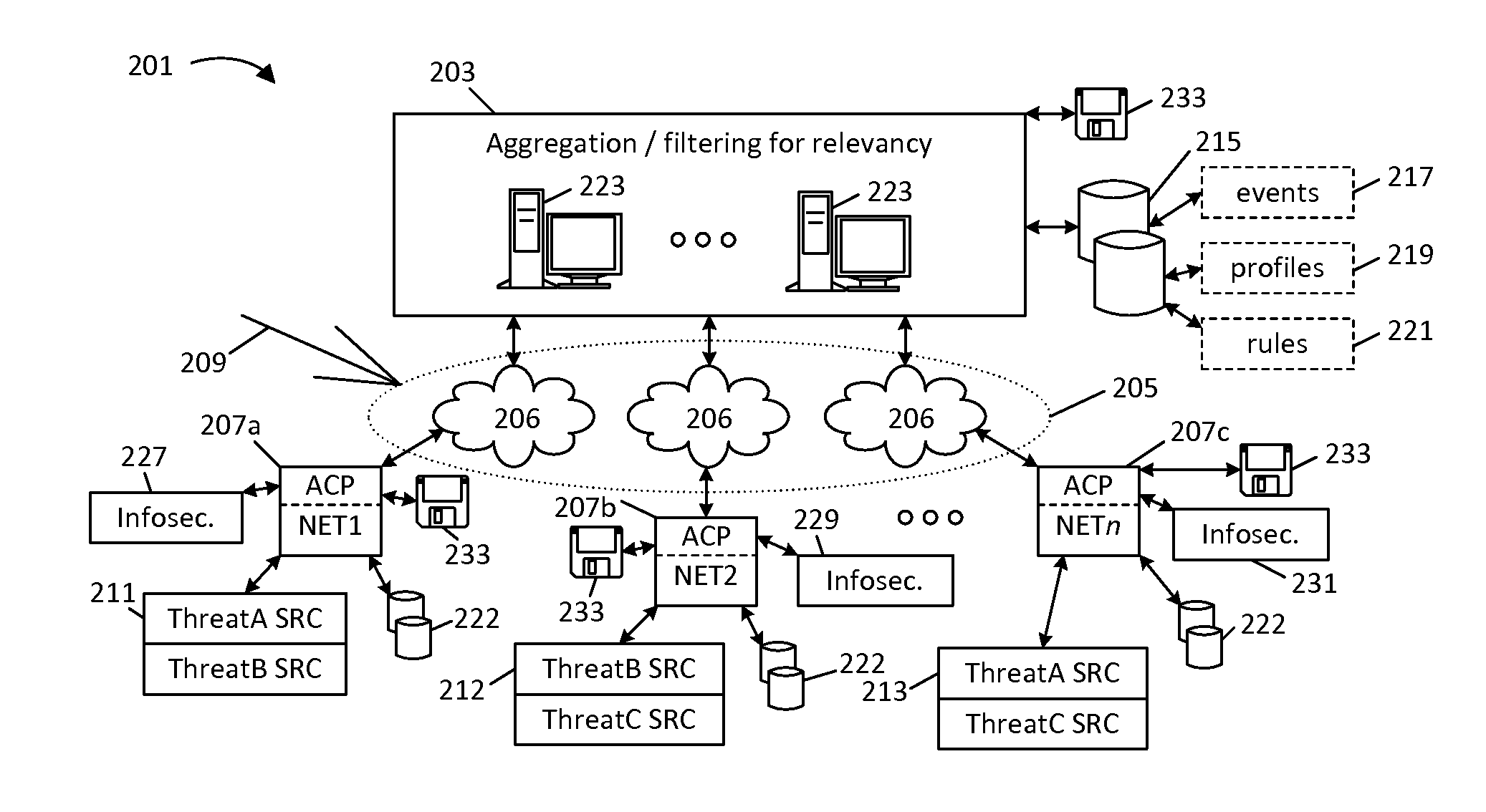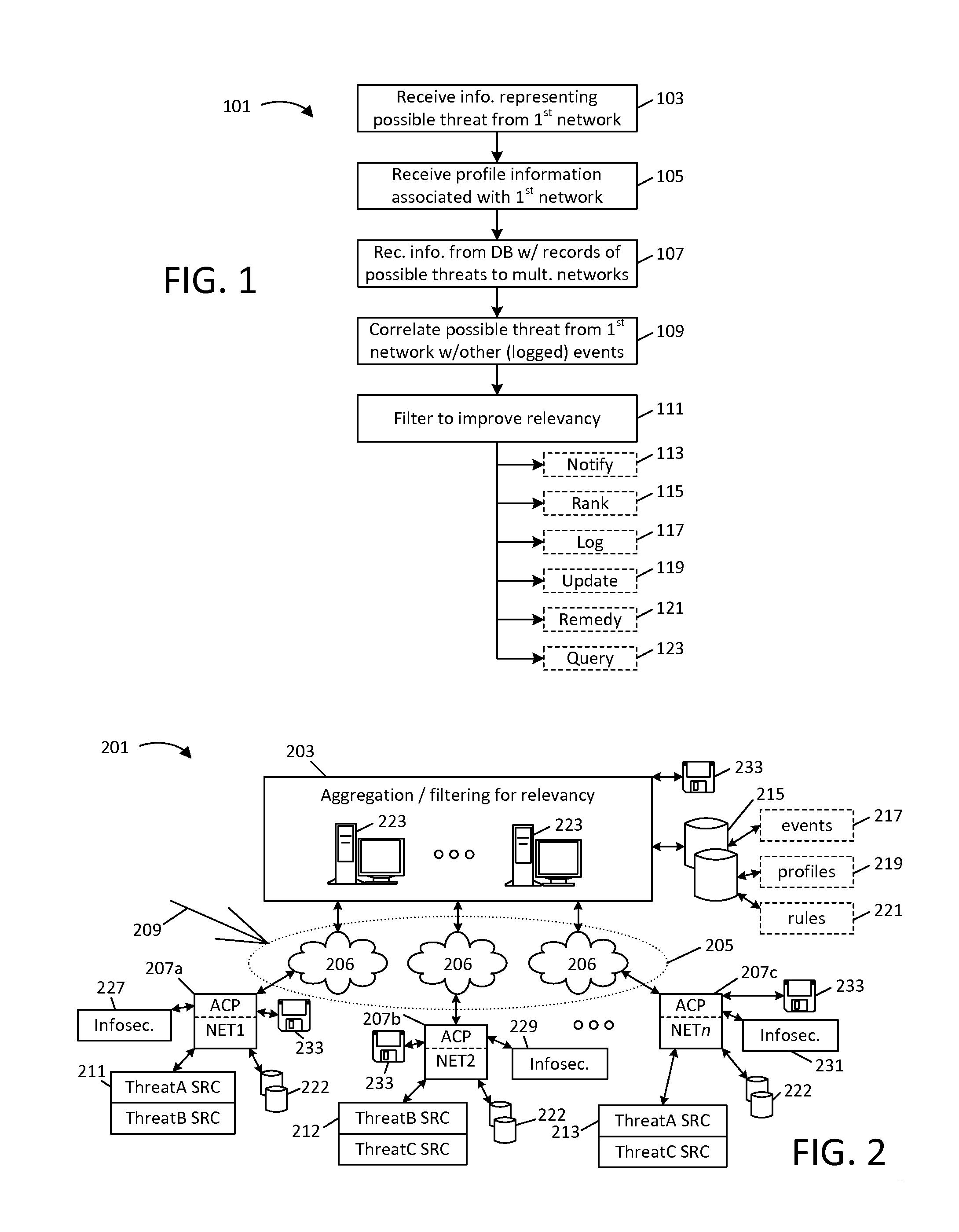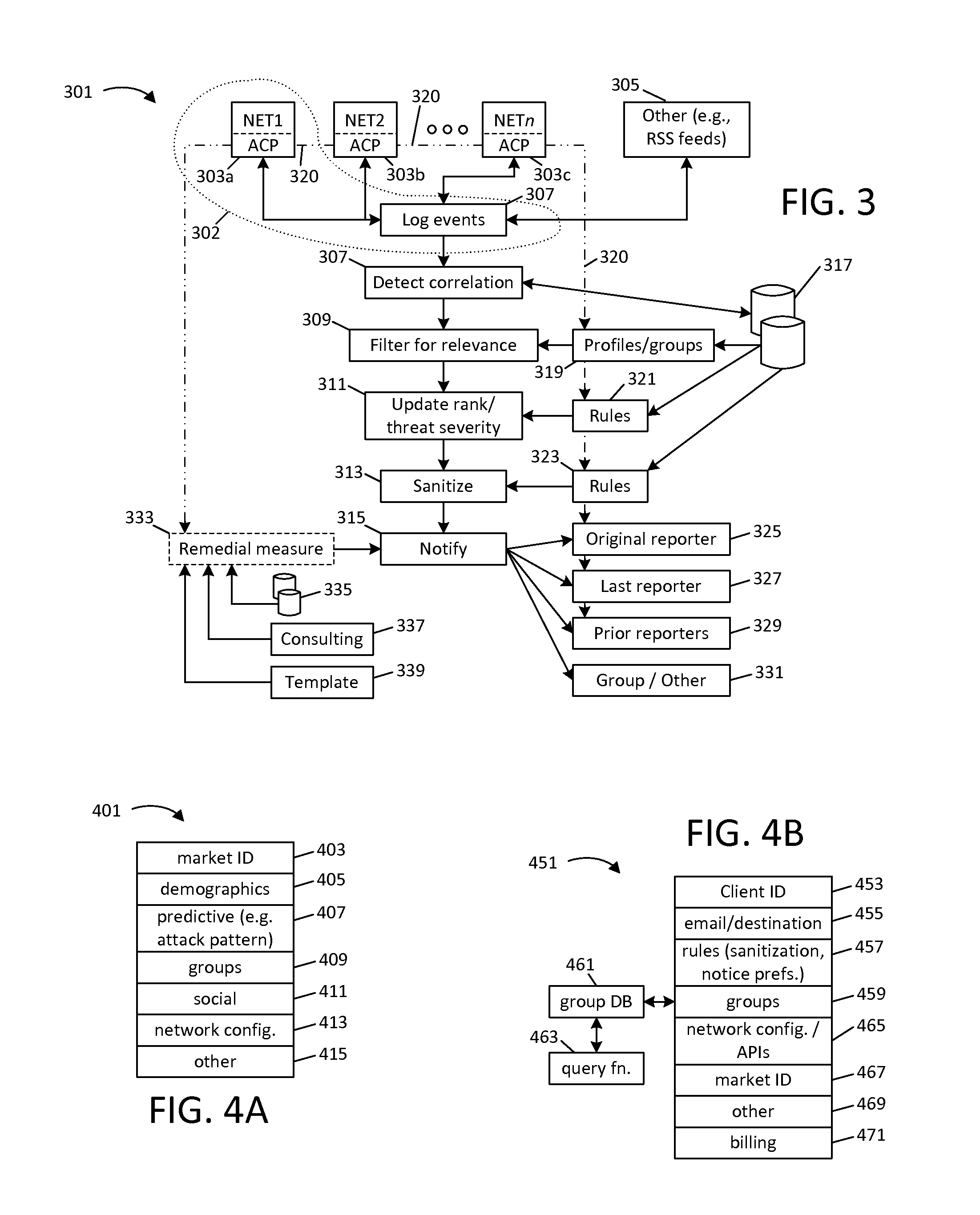Techniques for sharing network security event information
a technology of network security and event information, applied in the direction of unauthorized memory use protection, error detection/correction, instruments, etc., can solve the problems of private network at risk, misuse of private network resources, and overflow of services,
- Summary
- Abstract
- Description
- Claims
- Application Information
AI Technical Summary
Benefits of technology
Problems solved by technology
Method used
Image
Examples
third embodiment
[0033]In many embodiments, sanitization of information is relied upon to provide client confidence that information will not be shared which reveals client network vulnerabilities or otherwise exposes clients to any of the risks identified earlier. Thus, in one embodiment, each query and / or any provided results are sanitized, to strip some or all information identifying a reporting client, directly or indirectly. For example, in one embodiment, all queries and / or responses are translated to a common, normative communications framework (CCF) and are sanitized to remove identifying information; information such as Internet Protocol (IP) addresses which identify a target or its domain can be removed and / or converted to a format from which source identity cannot be discovered. In one embodiment, these functions are performed by a central query routing and / or aggregating service, as introduced earlier. In another embodiment, these functions can be partially or fully performed on a client...
second embodiment
[0040]It should be assumed that one or more of the depicted networks (NET1-NETn) will at some point come under attack from an unknown source, represented by numeral 209 in FIG. 2, and further, that information is available that would enable realtime identification of this attack, but is “buried” amidst a vast amount of information logged by the target network. For example, network NET1 might experience a first set of security events 211 (labeled “ThreatA SRC” and “ThreatB SRC”) but be unaware that this data represents a risk to its networks. As a separate matter, network NET2 might experience a second set of security events 212 (labeled “ThreatB SRC” and “ThreatC SRC”), and network NETn might experience yet another set of security events 213 (labeled “ThreatA SRC” and “ThreatC SRC”); it is assumed that these events 211, 212 and 213 represent risks to these networks (e.g., malware, viruses, spam, directed attacks, and so forth, of varying severity) but that these events are very smal...
PUM
 Login to View More
Login to View More Abstract
Description
Claims
Application Information
 Login to View More
Login to View More - R&D
- Intellectual Property
- Life Sciences
- Materials
- Tech Scout
- Unparalleled Data Quality
- Higher Quality Content
- 60% Fewer Hallucinations
Browse by: Latest US Patents, China's latest patents, Technical Efficacy Thesaurus, Application Domain, Technology Topic, Popular Technical Reports.
© 2025 PatSnap. All rights reserved.Legal|Privacy policy|Modern Slavery Act Transparency Statement|Sitemap|About US| Contact US: help@patsnap.com



